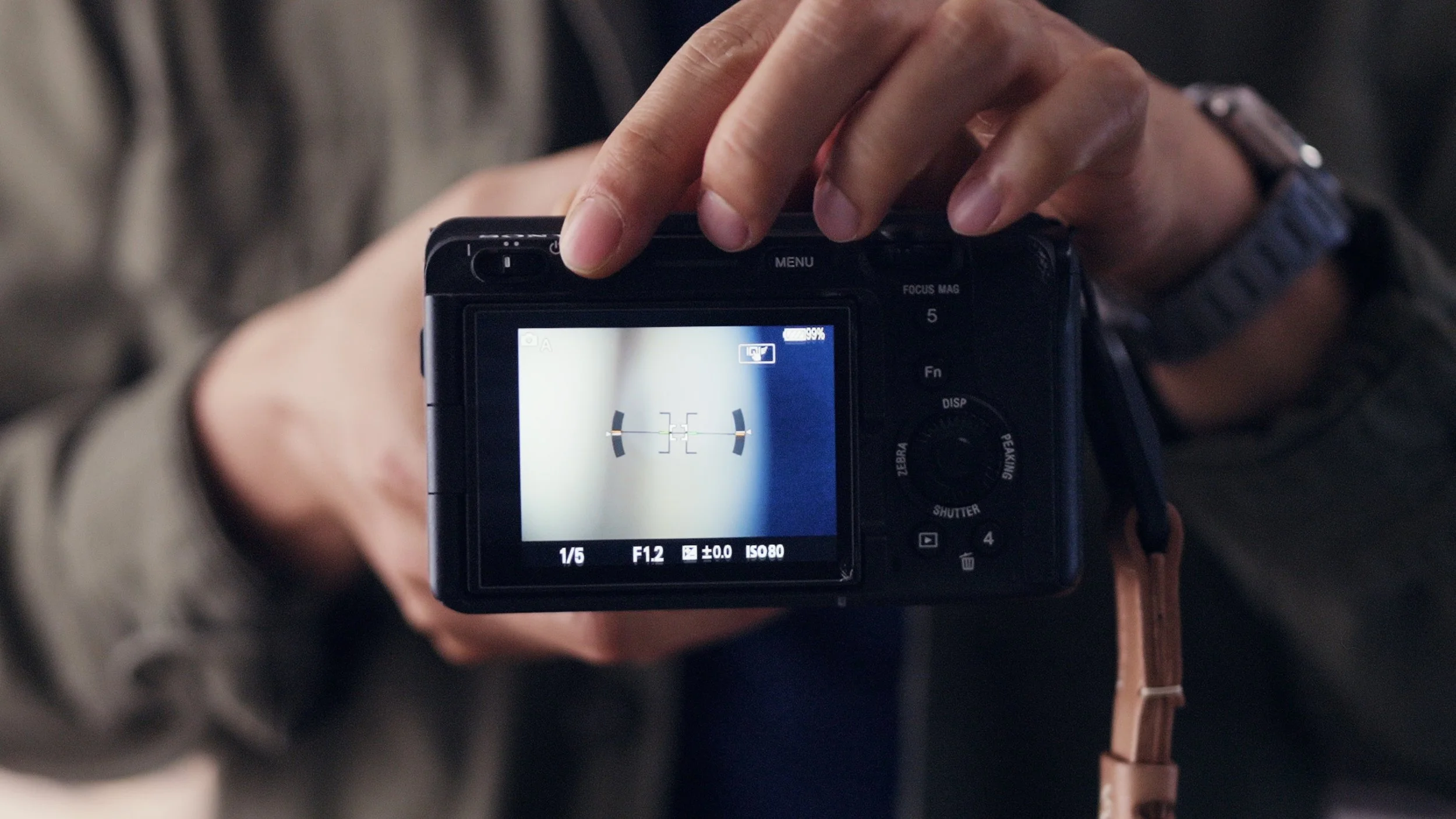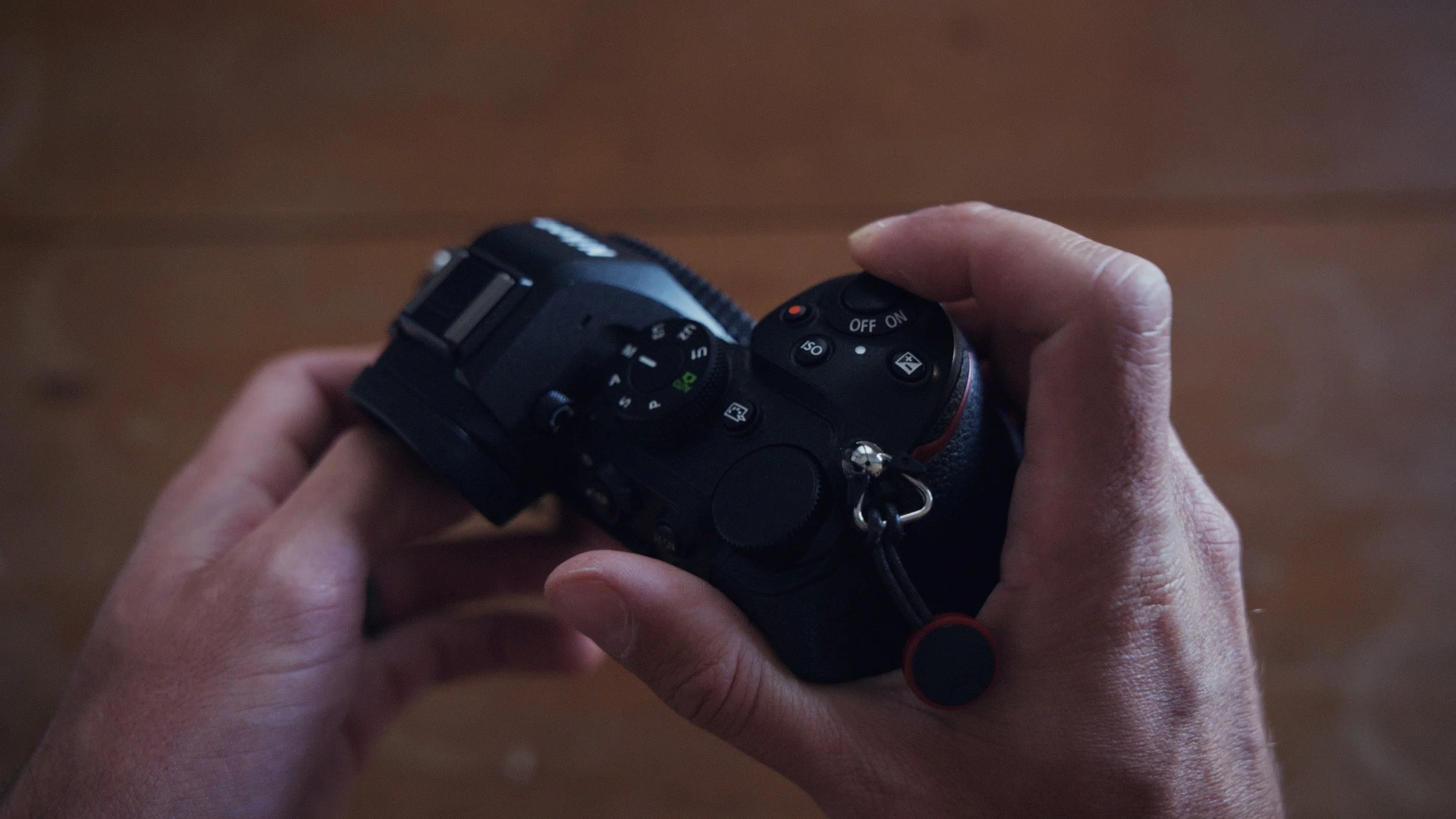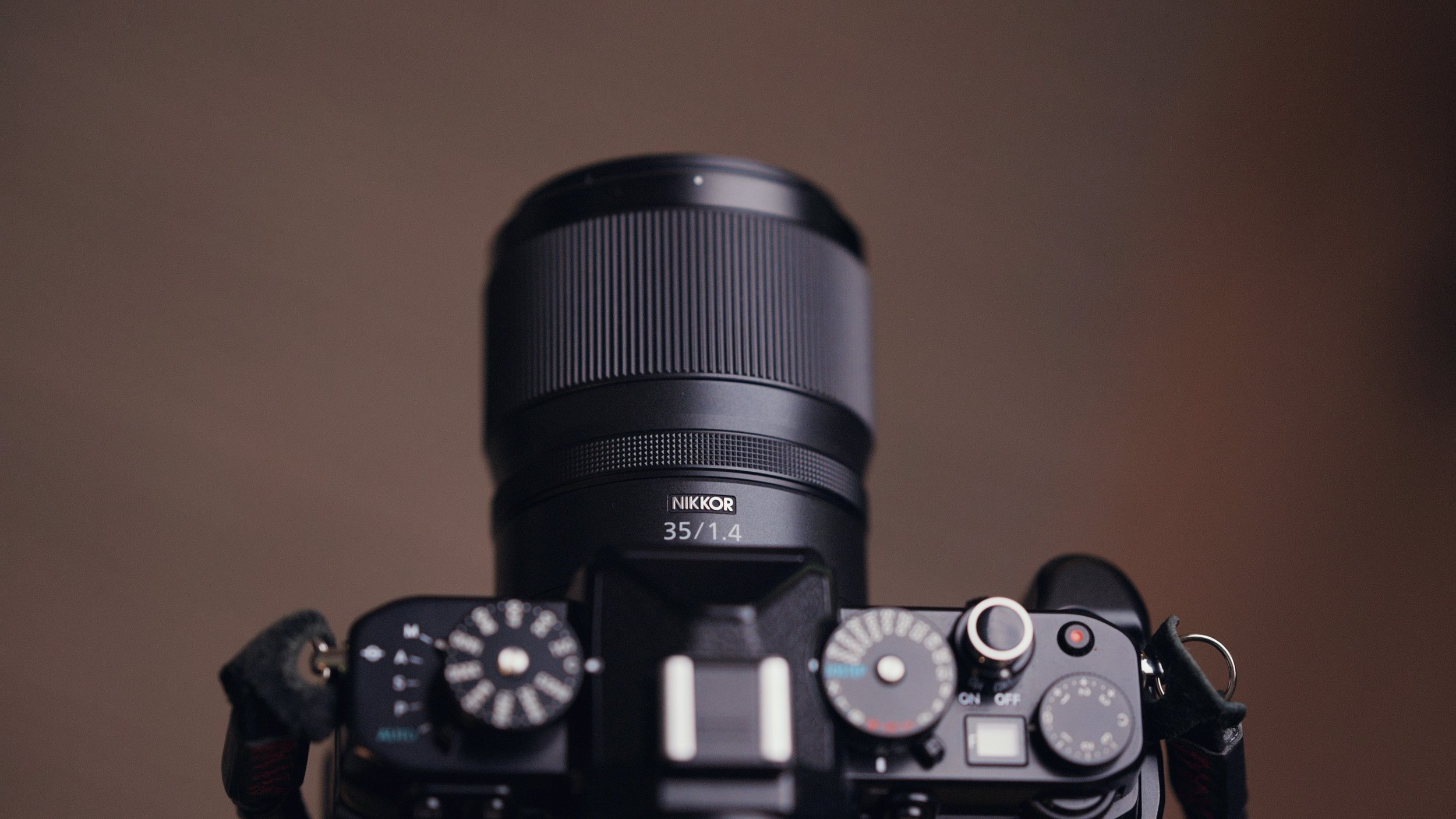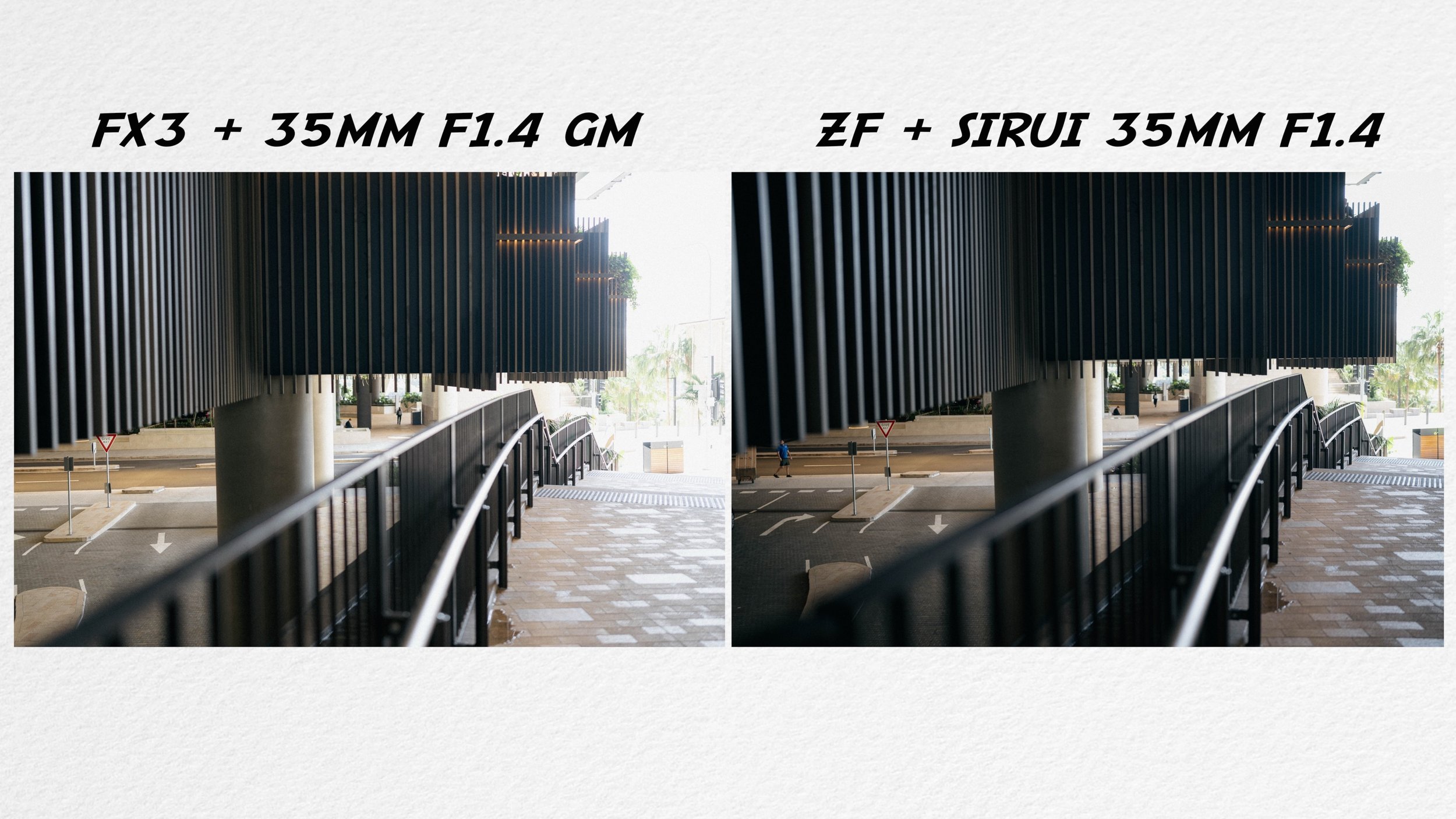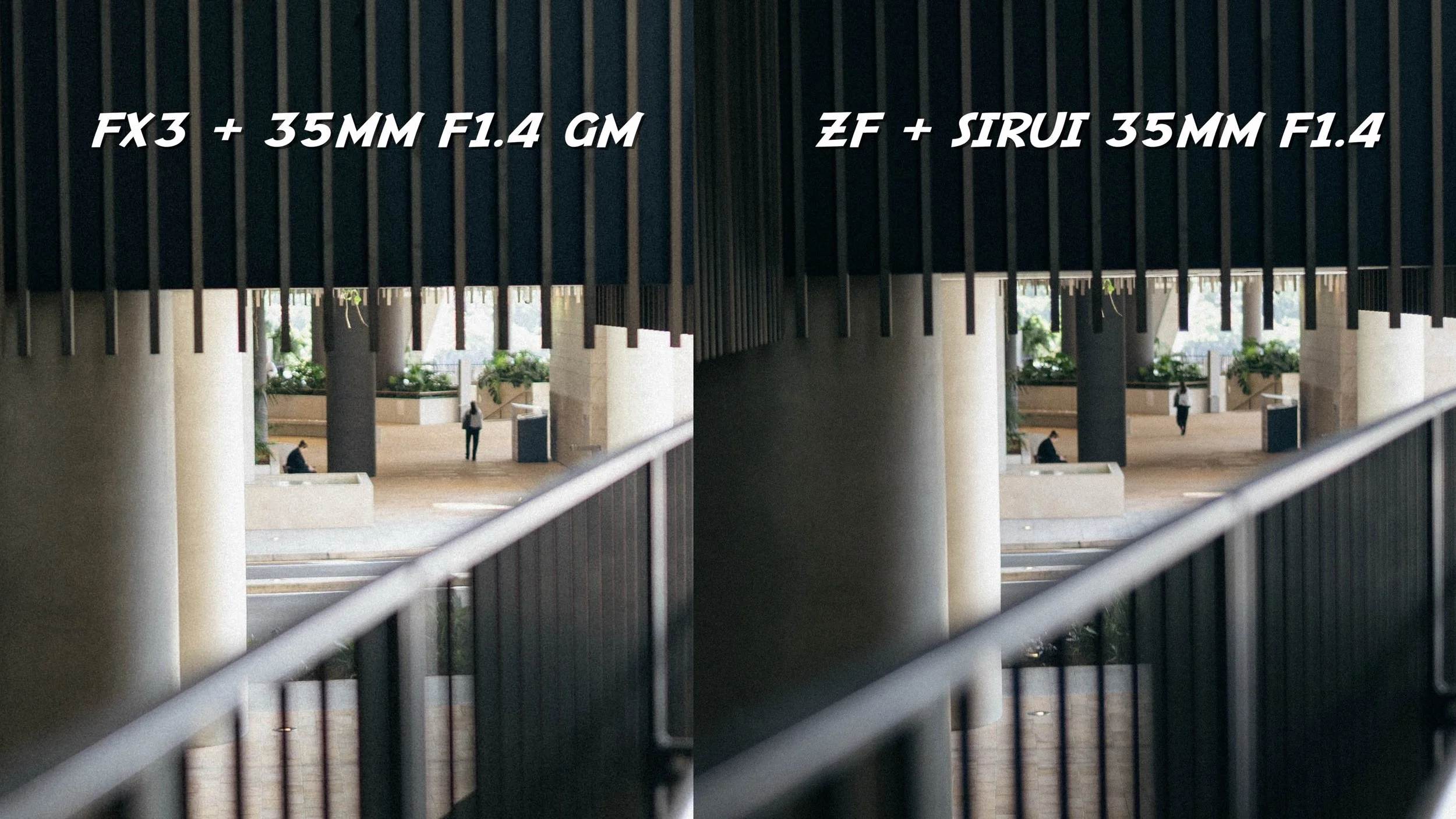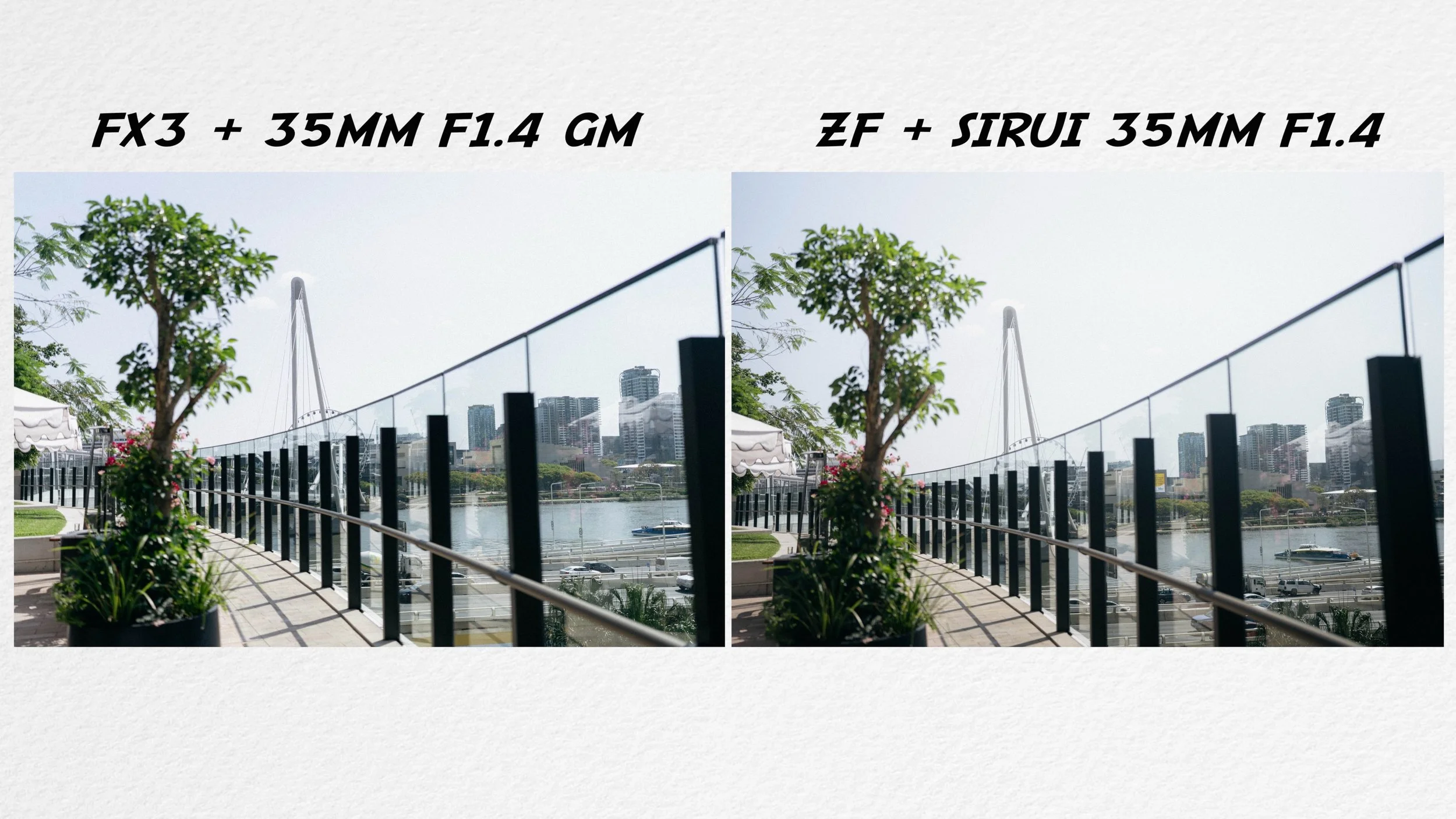Nikon’s Best Value Camera?
The Nikon ZR might be great value, I’d still pick the Zf or Z5ii?
Photo-first cameras are more versatile for most, and though the ZR beats these two in video, it probably won’t work for photo.
How do I know? I own the Sony FX3 - the ZR’s biggest rival, and though it can take amazing photos, Sony made 7 photography compromises for the sake of video. Did Nikon do the same?
I’m heading to my local camera store to try the ZR.
If it’s usable for photo does the ZR become the best value?
Photo - unlike video - you can do a lot with a little, and for photography the “entry-level” Z5ii even does one thing better than whole Z lineup.
For video? Both the Zf and Z5ii have 4K 10 bit log, up to 60 frames per second slow motion with a DX crop, but that crop makes the rolling shutter manageable. They can’t shoot R3DNE RAW video like the ZR, but their video file sizes are megabytes per second not half a gigabyte per second. If you don’t care what any of this means you definitely don’t need a ZR for video.
I make videos for my day job teaching college classes online, I also run two YouTube channels, the ZR’s overkill even for me? Especially because my new minimal video kit is hard to beat. It all fits inside this tiny Wotancraft leather pouch around my neck, and even if I buy the ZR?
It won’t fix the hardest problem in video.
Not the image quality, 32 bit audio, or card slots…
If the ZR is usable for photo however the value prop changes?
I. BUTTONS
The first photography compromise brands make for cinema cameras are the buttons. Not just how many of them there are - but how they feel.
Video buttons tend to feel “squishier” - the record button is either pressed or not, whereas a photo shutter button has more mechanical travel. The ZR, and the FX3 have their power button on the side, the Zf, Z5ii, and most photo-first cameras have it connected to the shutter. The half press of a shutter is really important to photographers as is the shutter sound - and credit to Sony on the FX3 there’s still a mechanical shutter.
Nikon removed the mechanical shutter from the ZR - there’s no haptic feedback- but I’ll have to reserve judgement on how it feels until I test it out in person.
II. EVF
Cinema cameras tend NOT to have a built in EVF - you want as big a screen possible to monitor the video feed? Production teams also want the flexibility of mounting these smaller cinema cameras to unusual locations (very high or very low angles), a lot of cinema cameras EVFs are detachable for a reason.
The Sony FX3 has a tilt-flip screen, it’s not the best quality screen but it’s serviceable. If you’re used to shooting from the hip using the LCD, or love the Ricoh GR experience this won’t be a dealbreaker.
Is it a dealbreaker for me? I use EVFs 70% of the time for photo, although the ZR is already famous for its massive 4 inch LCD display, I look forward to seeing how bright it is in person. There’s a chance Nikon will release a detachable EVF accessory. However - that’s what FX3 owners assumed Sony would do? There’s more money to be made in a whole new camera - the FX2, with its dedicated tilting EVF.
Why would anyone want to use the ZR for photo? Two reasons.
1: Price. I know it’s missing an EVF, no mechanical shutter, but the ZR is significantly less than the Z6III, cheaper again than the Z8, Z9. Almost a no brainer, unless you’re competing on price against a Zf or Z5ii.
2. Form factor. Every small boxy camera - no matter the brand, sells like hotcakes - and until the ZR Nikon’s full frame Z lineup of cameras and lenses were bigger and heavier than the competition. If the success of the ZR is any indication, hopefully a photo-first ZS is on the way too?
You could shrink the kit size down by going crop - Nikon’s DX Z50ii, looks great - but Nikon’s DX lenses are a bit lacklustre compared to the spectacular full-frame S lens lineup. But a mirrorless camera will still be too big for photographers just starting out in video, we’re already carrying around too much photo-gear, which is why the Zf and Z5ii - photography first, a bit of video in a pinch - are my picks.
Yet a cinema camera doesn’t fix the hardest problem in video.
Not the button layout, EVF, or color science…
I used to lug around a FX3, now it’s just what fits in this tiny leather Wotancraft pouch.
The Large is useful as a lens pouch when attached to their camera straps. But the small fits exactly what I need - a DJI Osmo Nano. It’s become my default for on the go vlogging, along with a DJI mic 3 or mini transmitter. So much easier to carry than even the very compact ZR.
This lets your main camera be photo first - could be a Zf or Z5ii? The Z5ii in particular has a class-leading feature unbeaten in the Z lineup, all without the next compromise found on video cameras:
III. PASM
I switch between Aperture priority and manual mode for photo all the time, and a physical dial - whether it be PASM or manual dials on my Zf - really helps.
For a video-first camera this makes less sense - you’ll want your shutter speed to be manually fixed to double the frame rate - 1/50, 1/60… there’s almost never the need for Aperture priority. The AF-ON button also seems to be missing in cinema cameras. I’m not a back button focuser - although an extra reprogrammable AF-ON button is always welcome.
On my FX3 for photo I’ll need to dive into the menu to choose Aperture priority for photo, back into the menu to change to manual. Photo to video is also a menu dive - a slow hybrid workflow. At least the ZR gives you a physical photo to video switch which remembers your mode and exposure settings, and you can program a button to switch between modes. What you’ll also want to switch, is
IV. LENSES
Pictures in motion feel more intimate than a frozen moment, so you typically want wider lenses for photo than video
But photo - unlike video - you can do a lot with a little, and while a 35mm is a standard wide for photo, it’s a little too tight for video. Video feels more comfortable at around 20-24mm, much wider than the 35-50mm sweet spot most people prefer for everyday photography.
A 16-35mm fixes this problem - it’s why this zoom range is so popular. It works equally well for both video and photo… except perhaps the night time street photography I do?
I’d still choose my lenses primarily for photo, video as a backup, and Nikon’s 35mm 1.4 would be my pick on the ZR. Slightly dreamier vintage vibe at 1.4 is how I prefer my video footage to look, although for photo I prefer a cleaner look. You can adapt Sony’s 35 G Master with the Megadap ETZ21 Pro+ adapter, or there is Sirui’s 35mm 1.4 Aurora in Z mount. Slightly longer than the Nikon 35mm 1.4 while still using 62mm filters.
All the sample images in this blog post were edited from RAW files using my free Chrome emulation preset. They work with most RAW files from different cameras as long as you use “Adobe Color” as the starting base.
Download it for free here.
Image Quality is almost identical the Sony G-master, sharpness, fringing, chromatic aberration, flare resistance - all very well controlled. Third party Z lenses have come a long way. I like the Sirui’s declickable aperture ring and lock, function button, rubber gaskets to protect against dust and moisture, unlike…
V. WEATHER SEALING
Video generates a lot of heat, and the FX3 has vents to let it dissipate. This means it’s not weather sealed, which isn’t a huge deal for a studio shoot, or a production designer holding an umbrella on set.
But photo - unlike video - you have to do a lot with a little - we’re our own one-person crew. I for one, expect my gear to be weather-sealed.
My ZF’s almost 2 years old - I’ve used it more than any other camera I’ve ever owned. Dials are just as clicky, not many scratches on paint on the top plate, brass dials haven’t scratched or worn away. I feel totally comfortable taking this weather-sealed camera into the elements.
What about the ZR? Unlike the FX3, the ZR isn’t covered in vents. There’s no built-in fan, or attachable fan accessory, yet somehow Nikon made the ZR weather-sealed? Only time will tell, but from the reports I’ve seen the ZR doesn’t really overheat.
As for how premium it and feels? I’ll know after I test it out.
VI. IBIS
A stabilised sensor is a gift and curse for video - if the mechanism is tuned too strongly you’ll get warping wobbles in the corners. That’s why the Canon C50 - released around the same time as the ZR - doesn’t have IBIS. Disappointing for Canon shooters but not that uncommon in this category.
The FX3 does have IBIS, it’s really not the best, hand held video is workable but it doesn’t look that smooth. The ZR’s IBIS looks similar to that of the Z6iii - which in my experience works better for photo than video. Tuned almost a little too twitchy for video, but hand-held long exposures are very handy, especially in low night, which is where the Z5ii shines brighter than any other Z camera.
According to Nikon and my friend Sam, The Z5ii’s low light autofocus? Better than even the Z8, Z9. Nikon made their cheapest full-frame entry even better value. What about the ZR?
This is hardly a comprehensive review, I only played with the camera for about 20 minutes in store but most of my photography concerns hinge on the physical handling.
Some preliminary thoughts:
Ergonomics were fine. Could be better, but it’s a lot lighter than the Zf and adds a grip - more than what’s on the Zf for sure.
No EVF? More than compensated by how bright and immersive the 4” LCD is for composing. It’d be fantastic for manual lenses with or without focus confirmation tools.
There are enough buttons and dials to control aperture and shutter speed manually, not deep-diving into the menus
Photo to video doesn’t preserve independent modes in each currently (e.g. Aperture Priority in Photo, Manual mode in video).
I think it is totally usable for photo, but I have one hesitation that can only be addressed with more long-term testing. Does the ZR overcome the next compromise cinema cameras make for photos?
VII. IMAGE QUALITY
The FX3 is optimised for low light video - hence its 12 megapixel sensor, and though the images from this photowalk looked fine that low resolution isn’t ideal for photo.
The ZR has 24 megapixels - perfectly usable for photo, but I do have a concern. It’s not the dynamic range - in my testing of the Z6III which shares the same ZR sensor, that dynamic range dip is mostly theoretical. I rarely shoot at base ISO on the street, at high ISOs the difference is negligible.
My concern for photo comes after my recent Taiwan trip. There were so many flickering lights from my Osmo nano footage, in night time alleyways the LED lights flicker at different frequencies. I’m not sure the partially stacked sensor on the ZR is fast enough to eliminate banding, and unlike the Z6III there’s no mechanical shutter to fall back on. So that’s why I don’t think the ZR works for my style of night-time photography, but this will take more long-term testing to figure this out?
Can the ZR work for video? Yes, of course.
Light compact, unbeatable value for full-frame video, but:
It still doesn’t address the biggest problem in making videos.
It’s not your camera’s dynamic range, video codecs, how big the screen is…
But the fact that before you even hit record. Manage the enormous files. Color grade. Edit. You need to figure out who it’s for.
Without a question to answer, someone to help, video requires too much investment in time.
But photo - unlike video - you can do a lot with a little - and photography can be selfish.
I do it to relax.
It’s OK if no-one but me sees these frames, and either the Zf or Z5ii is a great entry point.
Nikon Zf + Sirui 35mm f1.4 Aurora Z
All the sample images in this blog post were edited from RAW files using my free Chrome emulation preset. They work with most RAW files from different cameras as long as you use “Adobe Color” as the starting base.
Download it for free here.
Getting you to start the best hobby in the world - that’s who I’m making these videos (and writing these articles) for.
Happy shooting everyone, talk soon.
Jack.
This blog post is sponsor-free. If you’d like to support my work please consider purchasing gear through my affiliate links:
Nikon ZR: https://geni.us/KH4uMvX
Nikon Zf: https://geni.us/fRFp
Nikon Z5ii: https://geni.us/PJOmdUe
Sirui 35mm f1.4: https://geni.us/QVchhRp
DJI Osmo Nano: https://geni.us/zWPx
DJI Mic 3: https://geni.us/R6YNV6
Wotancraft Leather Pouches: https://geni.us/vzyZHq
Wotancraft Straps: https://geni.us/o8PO5p
Wotancraft Pilot Backpack: https://geni.us/AEqv
Wotancraft Pilot Sling 7L: https://geni.us/eU8Lj




